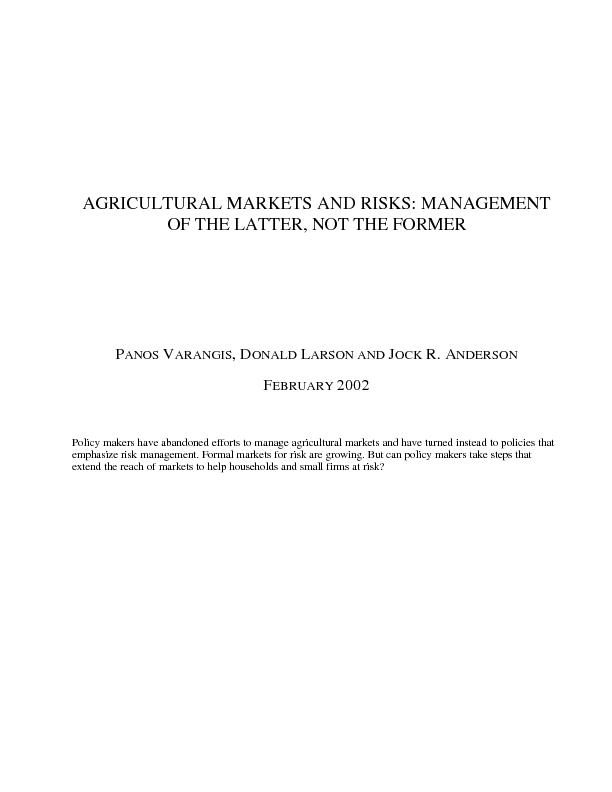Agricultural Markets and Risks: Management of the Latter, Not the Former

In this paper we review the historical relationship between the work of applied economists and policy makers and the institutions that came to characterize the commodity and risk markets of the 1980s. These institutions were a response to the harmful consequences of commodity market volatility and declining terms of trade. However, the chosen policies and instruments relied on market interventions to directly effect prices or the distribution of prices in domestic and international markets. For practical and more fundamental reasons, this approach failed.
We next discuss how a growing body of work contributed to a change in thinking that moved policy away from stabilization goals toward policies that emphasized the management of risks. We distinguish between the macroeconomic effects of volatile commodity markets and the consequences for businesses and households. We argue that both sets of problems remain important development issues, but argue that appropriate policy instruments are largely separate. Nonetheless because governments, households and firms must all respond to a wide range of sources of risk, we emphasize the role for an integrated policy by government.
Increasingly, alternative approaches have come to rely on market-based instruments. Such approaches accept as immutable the markets’ view of relative prices, but address directly the negative consequences of volatility. As risk markets ranging from traditional futures and insurance markets expand and new parametric markets emerge, the practicality of applying market-based instruments to traditional risk and development problems improves. We illustrate both the change in approaches to risk rather than market management and the reliance on old and new market instruments with new and sometimes experimental programs, emphasizing especially programs at the World Bank.
